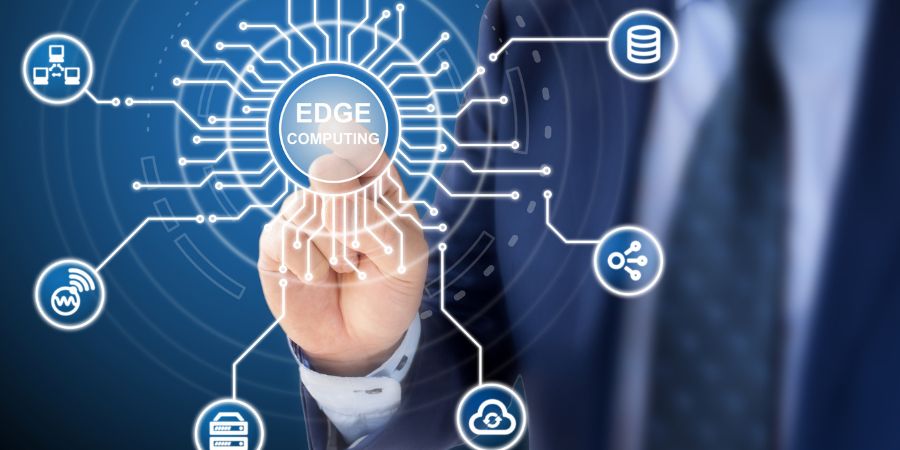Edge Computing vs Cloud Computing: What's the Difference?
Edge computing is a form of distributed computing that involves processing data at the edge of the network, close to the source of the data. Edge computing is different from cloud computing, which involves processing data in a centralized cloud-based environment. In this blog post, we'll take a closer look at the differences between edge computing and cloud computing. We'll explore how they compare in terms of performance, cost, and security.
What is Edge Computing?
Edge computing is a computing model that enables data processing and storage at the edge of the network, or close to the source of the data. This type of computing is different from traditional cloud computing models because it allows data to be processed locally rather than sending it back and forth to a cloud server. Edge computing is beneficial in applications such as the Internet of Things (IoT), where data needs to be collected and processed quickly, or in areas with limited or unreliable internet connections.
In an edge computing setup, there are “edge devices” or “nodes”, which are responsible for collecting data, pre-processing it and then sending it to a central server or the cloud. This approach can significantly reduce latency and improve performance, since the data is processed locally instead of having to be sent back and forth over the network.
Edge computing can also be used to store and process large amounts of data without having to send it to a cloud server. This provides a more secure way of storing and accessing data, since it’s not stored on a remote server. Additionally, edge computing can be used to support real-time applications and enable faster decision-making by processing data close to the source.
Overall, edge computing provides a powerful solution for applications where speed, reliability and security are critical, as well as for applications that need access to data from multiple sources located around the globe.
What is Cloud Computing?
Cloud computing is a type of computing that relies on shared computing resources such as networks, servers, and storage systems that are hosted in a remote location—typically referred to as “the cloud.” It's a way of accessing computer resources over the internet, instead of using a local server or computer. It allows businesses to access powerful computing capabilities without having to purchase or maintain expensive hardware or software.
Cloud computing services are delivered in several different ways. Infrastructure-as-a-Service (IaaS) is a type of cloud service where customers pay for access to physical or virtual machines, while Platform-as-a-Service (PaaS) provides customers with access to a platform that can be used to develop, test, and deploy applications. There are also Software-as-a-Service (SaaS) solutions, which provide customers with access to cloud-based applications such as webmail and customer relationship management systems.
Cloud computing has become increasingly popular for businesses of all sizes. It provides scalability, cost savings, and fast deployment times. Companies can focus on their core business processes rather than dealing with IT infrastructure. Plus, cloud computing services can provide disaster recovery and data backup services, which can be invaluable for businesses.
Difference Between Edge Computing and Cloud Computing:
Edge computing is a type of computing architecture that processes data closer to where it’s collected, rather than sending it to the cloud for processing. By bringing the processing power closer to the source of data, edge computing enables faster response times and reduces latency issues. Edge computing can be used in a variety of applications, from augmented reality and robotics to autonomous vehicles.
Cloud computing, on the other hand, is a type of computing architecture that provides on-demand access to virtualized IT resources over the Internet. Cloud computing enables users to access data, services and applications remotely and on demand, with no need for local hardware or software installations. Cloud computing allows companies to focus on their core business, as they don’t have to maintain IT infrastructure or hire personnel to manage it.
The main difference between edge computing and cloud computing is the location of the processing power: while cloud computing uses remote servers in data centers to process data, edge computing brings the processing power closer to where the data is collected. This difference can have a major impact on latency, reliability and security. Edge computing offers faster response times, as it eliminates the need to send data back and forth between the source and a remote server. It also improves reliability, as it reduces the chances of data loss or corruption due to network failures. Finally, it enhances security, as the data never leaves the local area.
In summary, edge computing and cloud computing are two different types of computing architectures that offer distinct benefits depending on the application. Edge computing is best suited for applications that require low latency, such as robotics or autonomous vehicles, while cloud computing is better suited for applications that require remote access or scalability.





No comments